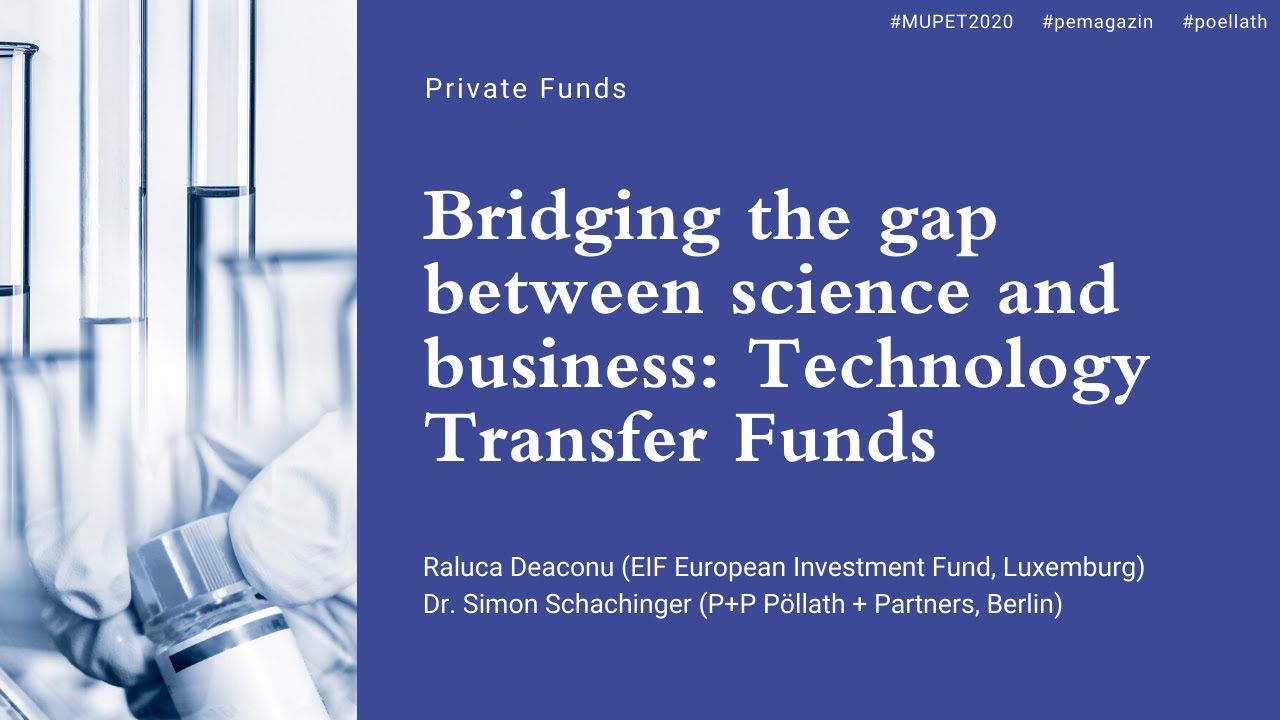
In order to become useful for the general public and economically relevant, many inventions that come out of universities or other research institutions as basic research results have to be further developed and upgraded on their way through the economic cycle. This process usually requires large amounts of funding and a long-term commitment – something that is not always readily available. Raluca Deaconu from the European Investment Fund (EIF) and Dr. Simon Schachinger from P+P Poellath + Partners have discussed how technology transfer funds can help building a bridge from basic research to market-ready products at MUPET 2020.
Technology transfer (TT) broadly describes the process of converting scientific findings from research organizations and universities into marketable products with the help of the private sector. Instead of backing individual research projects or isolated background IP with uncertain chances of success in turning it into valuable foreground IP and marketable products, investors can pool investments in TT funds investing into a broad range of projects, inventions and research results in order to mitigate risks and maximize output. The transfer process can involve the establishments of new companies (spin-out companies/start-ups) and various forms of collaboration between universities, research organizations, industry partners and specialized TT funds, e.g. through research contracts, or the licensing or sale of intellectual property.
Technology transfer still remains a rather political investment field, but one that offers economic opportunities with a growing potential for commercialization. Even though private investors become more and more interested in this field, the European Investment Fund (EIF) remains a crucial player, often taking the role as lead investor. Between 2006 and 2018 the EIF alone invested an amount of about EUR 1.7 billion in 38 TT funds throughout Europe. While the market is more advanced in the Nordic countries and Western Europe, two TT funds have recently been established in Germany in cooperation with the Fraunhofer Society and the Max Planck Foundation, respectively.
In the discussion at MUPET 2020, which – due to the COVID-19 outbreak – had to take place as online event, Raluca also talks about what the requirements of the EIF are when considering an investment in a TT fund. Another topic is the legal set-up of TT funds. In general, technology transfer funds can be structured either as limited liability companies or, like most venture capital and private equity funds, as limited partnerships. However, the structure of TT funds differs materially from traditional funds, given the number of additional stakeholders and the fact that it would be unfeasible to set up a separate entity for any single research project a TT fund will engage in. Raluca and Simon further address questions of taxation and certain regulatory aspects of TT funds.
